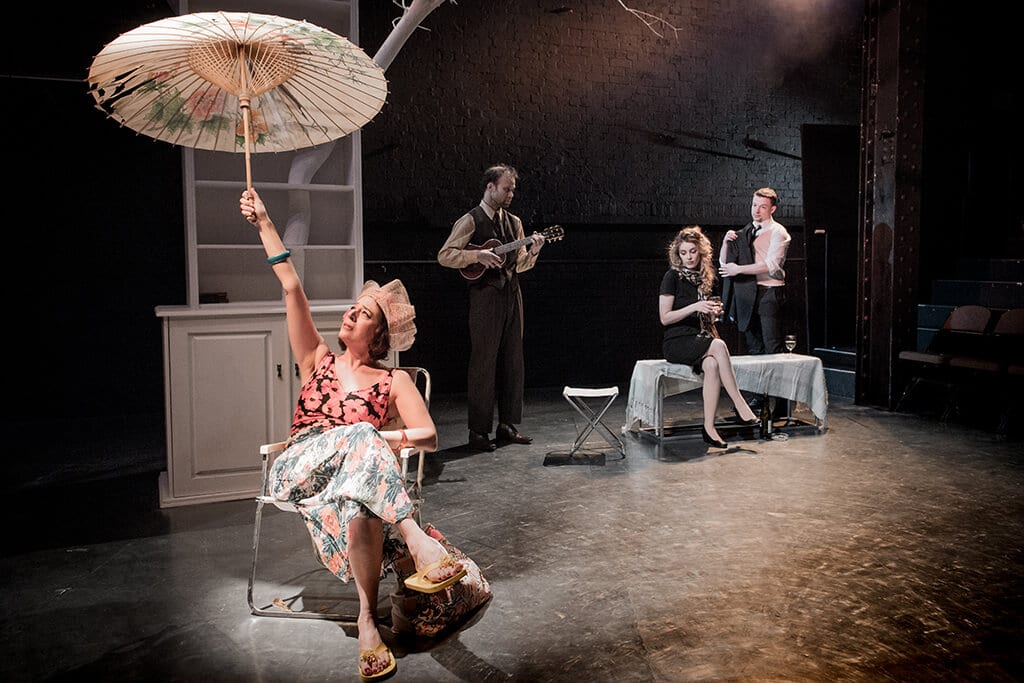Chekhovs’ The Cherry Orchard follows the story of Madame Ranevsky who has returned home to her family estate, which holds a cherry orchard in their gardens. However due to piling debts, she is slowly having to watch her family estate slip through her fingers whilst at the same time recovering memories that she obtained in the estate and realising just how strong of a relationship is present with the family, the estate and all that it comes with. The Cherry Orchard is a drama about a family on the edge of ruin, and a nation on the brink of revolution. Suitably closing Arcola’s season inspired by the 100th anniversary of the Russian revolution.
Mehmet Ergen interpretation implicitly explores ideas that relate to contemporary audiences, more specially class struggle, social conflict, displacement and the differences between younger and older generations which seems fall within this environment post-Brexit and Trumps America. However some of the arguments presented and tensions were not presented in a contemporarily way. therefore losing its strengths. Ergen’s direction really pursued the comedic elements and brought them to the heart of the performance, this was supported with a melodramatic form of expression from the actors which at times may seem too overpowering for the way in which the narrative is being presented and because of the style of theatre the Arcola usually accommodates.
Ergen’s modern staging takes the audience to somewhere they are used to seeing, to a family that is familiar due to the fact that it feels like it is set in the English countryside, yet there is still a mutual understanding that the play is set in Russia with Madame Ranevsky coming from Paris. To enhance this concept, set and costume designer Iona McLeish did not use the brandish and extravagant costumes/interior that is expected from an aristocratic family. Instead the set design is minimalist; off centre of the stage is a white bookcase that extends upwards into the branches of what seems to be an orchard tree dressed with haze. The flooring is metallic, a steel that is marble like, and there are three cushioned seats dispersed within the space. Costume is contemporary, depending on character it ranged from evening gowns to denim skinny fit jeans. This at times juxtaposes the language and melodramatic nature of the performance which made the world being created odd.
The ensemble give a strong performance particularly as they have a range of the various generations. Sian Thomas’s Ranevksy seems to lead the narrative, taking us through the family’s estate and reasons for belonging as well as the devastating loss experienced. Jude Akuwudike’s Lopakhin, takes us on a journey of his own, we do not see the struggle until we see his triumph. There are some moments choreographed which would have been benefited from being explored in a less theatrical and strategic way just to bring some reality to the performance and could have also cut down the performance duration. As it is quite obvious the orchard itself will be destroyed and the family will lose their estate, the performance itself is more about the process, the journey rather than the destination.



